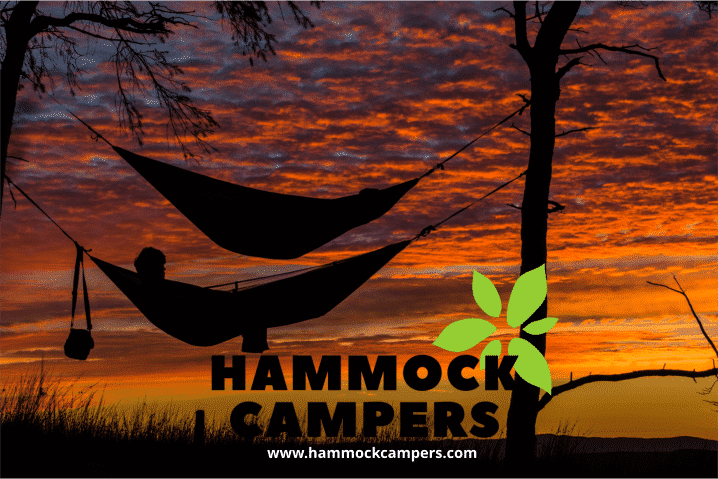Remember that fun person you were before work and life crushed your soul?
It sounds cliche, but camping is an easy, affordable reset button for life. One of the last great opportunities to truly disconnect, turn off the noise, and find balance in a crazy world.
Hammock Campers Easy Guide to Camping
When I decided to create our 2019 Hammock Campers Easy Guide to Camping, I wanted to organize it like a guide, but with added insight and storytelling from decades of camping experience.
Highlights of the Hammock Campers Easy Guide to Camping:
- Why is Camping Popularity on Fire? – 2019 Camping Trends.
- New Life Experiences – Camping Growth is from Gen X and Millennials.
- Outdoor Recreation Industry is Massive – And it’s still growing.
- Storytelling Over Numbers – Imagery is often better than statistics.
- Disconnect: The Hidden Benefit of Camping – It’s time to unplug.
- Chronic Sleep Deficits – Everyone needs more sleep. Camping helps.
- Natures Perfect Lullaby – Who needs sleeping pills? Just go camping.
- Family Camping – It’s one of the fastest growing groups of campers.
- Introduce Young Children to the Outdoors – Ideas for easing into camping with kids.
- Backyard Camping Works – By far the best way to get kids comfortable with camping.
- Camping is the Perfect Stargazing Adventure – Stars look amazing away from cities.
- Nearby Campgrounds – Most camping happens within 50 to 100 miles of home.
- Public Campgrounds – Most are free or astonishingly cheap.
- Talk to Ranger Stations or Park Offices – It’s a simple phone call or website visit.
- What All Campers Need to Know About Campfires – Intro guide to campfires.
- Active Burn Bans Are No Joke – several states have burn bans in place.
- Where to Find Wood for Campfires – Gathering dead branches no longer works.
- Buy It Where You Burn It – find locally sourced campfires wood near the campsite.
- Know Your Gear – Camping is easier when you know your gear.
- Cleaning Your Gear –This isn’t optional. Mold grows fast after rain.
- Tips and Tricks for Cleaning and Maintaining Your Gear: Take care of your gear.
-
Stowaways: The Hidden Surprise Waiting in Your Gear.
- Bonus Pro Tip: How to scare away angry chipmunks as they attack you.
- Bonus Pro Tip: How to scare away angry chipmunks as they attack you.
Why is Camping Popularity On Fire?
If you haven’t spent much time outdoors lately, it might come as a surprise to learn that camping popularity is on fire in the United States and Canada. This growth trend began five years ago and increased every year since.
According to the 2019 KOA North American Camping Report, 78.8 million U.S. households have someone who camps in it. That’s an increase of 7.3 million since 2014.
And that upward trend is on a tear with 1.4 million new camper households added in 2018 alone. Millennials and Gen Xers make up three-quarters of all campers.
New Life Experiences
56% of all new campers in 2018 were millennials. That makes sense since camping is all about adventure, temporarily disconnecting, and finding new life experiences.
If we were on a game show, all three of these would fall neatly into the category of “things that interest millennials.”
Most people aren’t born with a love of the outdoors. It’s something you learn to appreciate by going outside and giving it a try. Your love affair with camping will happen slowly, over time, with each new experience adding to it.
After all, if these new campers weren’t enjoying themselves, they wouldn’t repeat the experience so often. Since 2014 the number of households that reported 3 or more camping trips annually has increased by 72%.
Outdoor Recreation Industry is Massive
According to a two-year 2018 study by the Federal Bureau of Economic Analysis (BEA), the outdoor recreation industry is massive at 2.2% of GDP ($412 billion). A number that makes it larger than other economic sectors such as legal services (1.3%), and oil, gas, and mining (1.4%).
The 3.8% industry growth rate of Outdoor Recreation also significantly outpaced the overall economy’s 2.8% rate.
Storytelling Over Numbers
Statistics are great for some people. But I’ll take the imagery from storytelling over numbers any day.
Like friends and family laughing and telling stories around a crackling campfire. Or the slow back and forth swaying of my camping hammock as I wake-up to a beautiful sunrise.
And a challenging hike up a mountain is always better when a breathtaking view is waiting for you at the top.

Disconnect: The Hidden Benefit of Camping
It might be mostly an indirect benefit, but I think this is one of the more important aspects of camping. Like one of those things that you realize is important, but not until later.
I call it the disconnect. Many people initially dislike it and use less amicable names. After all, who wants to live without a cell signal or wifi. Oddly enough, it’s also the hidden benefit of camping that many people miss once they go back to civilization.
If you are one of those people that wonders why on earth someone would give up technology and modern comforts to go into the woods and live like a Neanderthal for a few days, it’s this. The ability to disconnect from everything.
And ‘living like a Neanderthal’ is a bit of a stretch. Experienced campers know modern outdoor equipment manufacturers today build high tech camping gear in a multi-billion dollar industry.
Personal Preference
It’s one of those, “don’t knock it ’til you try it” activities that most people enjoy if they give it a chance. But if you would rather stay connected, that’s cool too. It’s all about personal preference.
You choose to camp where, when, and however you want. Connected or not, nature is very flexible.
It’s all about preference, location, and options. Choose the one that works for you. Heck, you can even go to a commercial campground like KOA or Good Sam’s and get access to wifi, swimming pools, hot showers, and more. Whatever works for you.
Rather than bore you if disconnecting isn’t your thing, I wrote a much longer and more detailed post about it, titled somewhat unsurprisingly, “Disconnecting is a Hidden Benefit of Camping.” Check it out when you get a chance.
And if you’re on the fence about disconnecting, all I can say is give it a shot. What can it hurt to try unplugging for a day or two? You might be pleasantly surprised when you see first hand just how little the rest of the world cares if they can reach you.
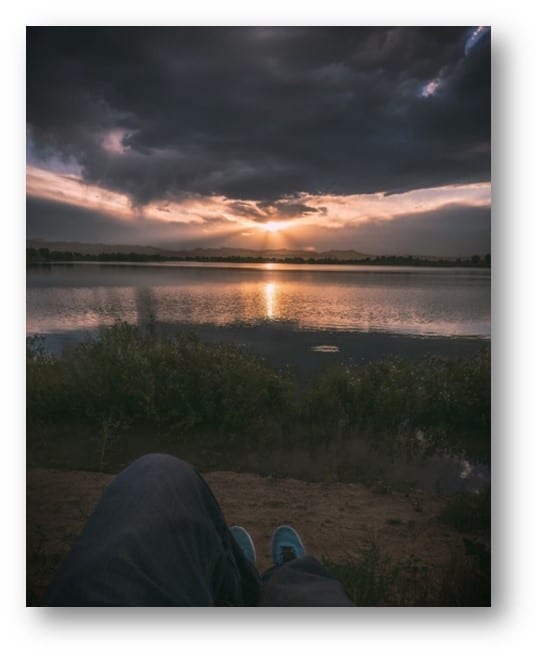
Chronic Sleep Deficits
Since we’re talking about the hidden benefits of camping, it’s worth mentioning sleep.
Are you one of the 50 to 70 million Americans with a chronic sleep disorder? Or maybe you pop a sleeping pill like 30.6 million other Americans.
Both of these situations are less than ideal. Getting enough sleep is essential to living a healthy life.
Sadly, Americans have a problem with chronic sleep deficits. It affects everything from memory and cognitive functions, to operating vehicles. And the health issues caused by lack of sleep are too numerous to list here.
Anytime my stress level has reached the point where it’s affecting my sleep; I know it’s time for a camping trip.
Nature’s Perfect Lullaby
Drifting off to sleep to the sound of crickets as lake water casually laps the shore is like a sleeping pill custom made by nature. Think about how much more relaxed you would be from a lot of fresh air and simply being in the moment.
We lose that in the constant hustle of our daily lives. It’s surprising how fast we remember what is truly important after we disconnect from the rest of the world.
Take all that, mix in the casual rocking back and forth of a camping hammock, and you’ve got the recipe for nature’s perfect lullaby.
How do you top an incredibly deep, restful sleep? With coffee, of course. I can tell you from first-hand experience; all coffee tastes fantastic when you’re sitting next to a campfire in the crisp air of the early morning.
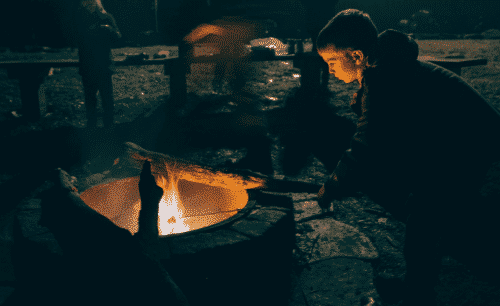
Family Camping
Remember how much you loved being outside as a kid? The sounds of gravel, dirt, and branches crunching under your boots usually trigger fun memories.
If you didn’t go outside that much, you could always make new memories as an adult. That’s the great thing about family camping; there’s never a shortage of experiences for both parents and children.
Remember that hike I mentioned earlier? It’s much more fun taking your children with you and watching their reaction to that same breathtaking sunset.
Or roasting marshmallows by the campfire and making smores.
How about fishing on a lake and cooking your daily catch over the campfire?
Fun experiences are so much better when shared with family and friends.
Camping is Affordable
Sometimes we forget that we live in a big, fantastic world. Kids are great for reminding us of this. And one of the best parts of parenting is the opportunity to introduce them to fun things for the first time.
Camping families also tend to be the most devoted group of campers with two-thirds increasing their camping in 2019.
Camping is affordable, and nearly always close to home. There’s no need for a hotel or a plane. That’s why it’s so perfect for families.
You can head home after work on a Friday and still make it to the campgrounds before dark. Throw your gear in the car. Pack up the family. And go.
No rule says you can’t wait to mow the lawn another day.
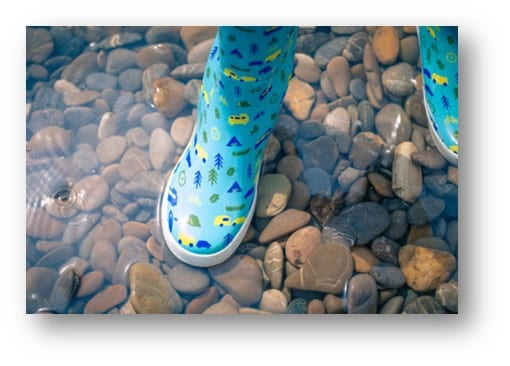
Introduce Young Children to the Outdoors
Here’s another idea if you’re short on time, money, or both. Kids love being outside. To a child, everything is an adventure. And when Mom and Dad get to join the fun, it’s even better.
I have three kids, a 14-year-old son, and two daughters aged 12 and 4. All are experienced campers. Yes, even the four-year-old.
Backyard Camping Works
It might take a few attempts before your munchkin is ready to sleep through the night. And that’s to be expected. But give it a shot. You might be surprised how well backyard camping works with young kids.
As nearby campgrounds go, it’s the closest you’ll find. It’s also free and incredibly easy.
Plus, if you’re a new camper, this is the perfect opportunity for you to practice until you’re comfortable with your gear.
During their first few campouts, each of our kids only slept a few hours in the tent before they wanted their bed. This is the beauty of backyard camping with kids.
Since we were in our backyard, their bed was only a few hundred yards away. This was so much better than staying awake all night with a screaming child.
I cover this in more detail in my post about how to introduce young children to the outdoors with backyard camping.
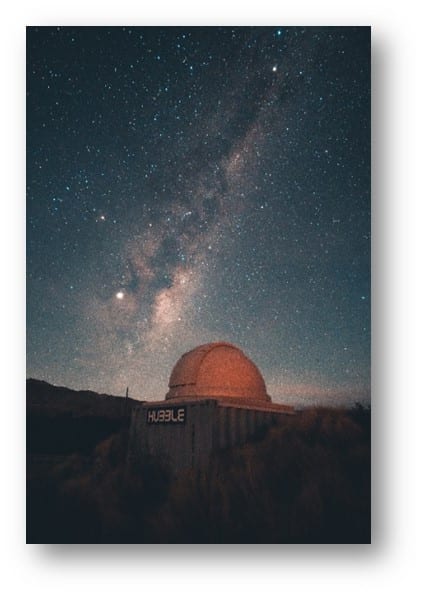
Camping is the Perfect Stargazing Adventure
You won’t be the same once you’ve seen stars in the night sky with no light pollution from nearby cities.
Did you know you can see the international space station as it passes overhead in the night sky?
I’m not talking about seeing it with a telescope, although that’s also cool.
I’m saying you can look up in the clear night sky, with just your eyes, and see things floating by – in space.
Space is super cool. If you don’t understand why just find a ten-year-old and read that last paragraph to them.
And then go check out my full-length post on why camping is the perfect stargazing adventure.
Nearby Campgrounds
Once you’ve mastered the backyard camp out, it’s time to give it a try in the real world. That’s the great thing about camping; everything is close.
According to the 2019 KOA North American Camping Report, 59% of campers stay within 100 miles of their home. 31% camp within 50 miles from home. The reason? We have an incredible number of campsites in the United States.
All 50 states have both public and private campgrounds. On the public side there are National, State, County, and local parks in every state. And the overwhelming majority of these parks allow some form of camping on their lands.
I’m not exaggerating when I say campgrounds are everywhere. Search on Google for “nearby campgrounds” and check out the results page.
Here in Pennsylvania, we have over 500 public campgrounds. It’s a small part of the over 13,000 public campsites in the United States.
Public Campgrounds: Most are Free or Astonishingly Cheap
Public campgrounds are free? Yes, to the surprise of many people, most public campgrounds are either free or so cheap that the cost doesn’t even need to be budgeted. At least not when you compare it to a hotel or other costly lodging.
So why do they charge anything? Some public campgrounds will charge a nominal fee and ask you to register with a park ranger office. Many larger parks only require this if you plan on staying in their lodging, such as cabins.
In terms of costs, there’s no comparison between camping and traditional lodging especially since the vast majority of locations are free.
Your camping hammock or tent goes wherever you do. It opens up a massive number of affordable accommodation options.
Talk to Ranger Stations or Park Offices
The only reason I’m even mentioning this is because I was surprised to learn how many people don’t bother to talk to park rangers or their offices when they go camping in State and National Parks.
If you’ve ever spent any amount of time outdoors, then you have a decent understanding of Mother Nature. Her mood can go from beautiful to brutal faster than you can react.
Experienced campers all have a healthy respect for that kind of power. Weather is unpredictable. So if you get in the habit of planning for the worst, then you’re prepared for most anything.
Learning the Hard Way
Unfortunately, like many things in life, I learned this the hard way.
In my 20s, I was cocky about my climbing skills. That led to a stupid decision, and I found myself caught unprepared while hanging from a cliff in the middle of a powerful storm.
I ended up spending the next two days in the hospital with severe hypothermia.
It was a learning experience that I never forgot.
Ranger stations and park offices can give you a wealth of information that can save your life. Or at least make your camping trip more enjoyable.
All it takes is a phone call or visit to their website.
Fortunately, near death experiences are powerful enough to teach even cocky 20-year-olds. It was a mistake I have never repeated.
50 Search and Rescue Missions Every Day
That experience might have made an impact on me. But it was only after nearly freezing to death on the side of a mountain.
I may be stubborn, but there are many, many others out there that behave even worse.
My behavior was a result of me assuming that I knew what the weather was going to do. I had no business making a decision like that. But I still had years of climbing experience to rely on. That is what kept me alive and got me down the mountain.
With the popularity of camping and hiking exploding everywhere, many newbies are making poor decisions and basing it on the assumption that they have nothing to worry about.
That’s why there are over 50 search and rescue missions every day for lost campers in the United States. At least one per day in every state.
Be Prepared
Like a recent hiker in New Jersey that only wore shorts and a t-shirt and had to be rescued off the mountain after he got lost. Had he simply researched the area where he was hiking, he would’ve known to bring a backpack with warm clothes because the weather changes fast.
As the Boy Scouts motto says, “Be Prepared.”
Research where you are going. Understand the terrain. Bring warm clothes and plenty of liquids even when it’s hot.
There are many areas of the country that vary from 100 degrees in the sun to 35 degrees at night. Know the area where you are hiking or camping.
Don’t be a statistic.
And always talk to ranger stations or park offices before your camping adventure.

What All Campers Need to Know About Campfires
The subject every new camper always wants to talk about is campfires.
Can you imagine going camping without a campfire? Sounds strange to those of us that have been camping for many years. But in parts of the United States, especially out west, wildfires are a major problem. So much so that many state and National parks currently have active burn bans.
Not to sound like a broken record, but that’s why you need to call or check the website of the ranger station or park office before you go.
Or don’t bother and your family might be sitting around a flashlight at night eating cold granola bars.
Active Burn Bans are No Joke
On September 2, 2017, a 15-year-old boy lit fireworks in violation of a burn ban. That started the Eagle Creek Wildfire in the Columbia River Gorge near Portland, Oregon. In May of 2018, a Judge ordered the boy to pay $36.6 million in restitution to the victims of the fire.
That wasn’t a typo. Fire inspectors trace wildfire origins back to the source. And if you cause a wildfire and they determine that you’re responsible, you could be on the hook for the entire cost of fighting it and the damages it causes. In the Eagle Creek case, the wildfire burned 48,000 acres over 2-months before it was finally contained.
Even in state and National parks where there isn’t an active burn ban, you need to make sure you are up to date on all rules and requirements for fire safety and proper campfire management.
Boy Scouts are taught to follow the ‘Leave No Trace’ method of camping. The condition of the campsite when leaving should be indistinguishable from how it looked when you arrived. It’s a great way to camp.
So as far as campfires are concerned, they are properly extinguished and covered with dirt or soil when exiting the campsite.
Where to Find Wood for Campfires
Newer campers will read that and wonder why it’s an issue. Aren’t we camping in the forest? Surrounded by wood?
Well, yes, but it’s kind of like being stranded on a boat in the middle of the ocean. Surrounded by water, but not a drop to drink.
You can’t just go chop down a tree and use it for your campfire.
Mainly due to the fact that it’s not allowed.
But also because live trees are literally wet lumber. It doesn’t burn well at all.
I know what you’re thinking. No big deal, we just gather dead wood from the forest floor anyway.
You might want to rethink that strategy. A large number of public lands, including many state and National parks, no longer allow gathering dead wood to use for campfires.
And the number of parks and campgrounds with this rule increases every year.
Why? It’s dead. What’s the big deal?
Not Enough Dead Wood in Forests to Supply Millions of New Campers
Unfortunately, as camping has exploded in popularity, so has the negative effects of having all those people out in the wilderness.
It’s the simple economics of supply and demand. There is just not enough of a supply of dead wood in forests each year to satisfy the demand from millions of new campers.
And for the record, I’m not trying to push some environmental agenda by pointing this out. I’m a big supporter of getting more people outdoors and having fun camping. It’s a good thing when people spend more time outdoors and learn to appreciate nurture.
Keep in mind that dead wood also has other important functions. Like helping to control soil erosion.
So if you haven’t figured out where this is going, many public campgrounds now require you to buy wood for campfires. And not just any wood. It has to be locally sourced near the campfire.
If you violate this rule, you could face state or Federal fines and criminal charges with penalties of a year or more in jail..
Buy It Where You Burn It
That leads us to, ‘Buy It Where You Burn It.’ A clever, memorable campaign by the USDA to make people aware of the potential destruction of local environmental ecosystems that can happen from introducing insects that are not native to a specific area of the country.
Wait. What? I thought we were talking about wood to burn in campfires?
We are.
Many different types of invasive insects live in wood. So let’s say you take logs from your woodpile at home outside of Cleveland. Toss them in the back of the SUV and drive to your camping trip in Maryland. You’ve fixed issues with needing to collect the dead wood from a forest and won’t be chopping down live trees. Win-win, right?
Well, almost.
Unfortunately, you could be transporting insects in that wood from Cleveland to a Maryland ecosystem that has never dealt with that type of insect. The results could be catastrophic.
If you think I’m exaggerating, go to Google and search ‘spotted lanternfly’ or ‘tent caterpillars’ in Pennsylvania.
Buy It Where You Burn It was introduced as a way to teach people about how they can help efforts to control the spread of invasive insect species.
The idea is only to buy wood that is locally sourced near where you plan to burn it.
What is considered local? Roughly 50 miles around where you are camping is a good rule of thumb.
There is obviously much more information about this subject than what I can cover in available space here.
Check out these additional campfire and fire safety articles on HammockCampers.com:
Hammock Campers Definitive Guide to Campfires and Fire Safety
24 Tips for Safe and Happy Campfires
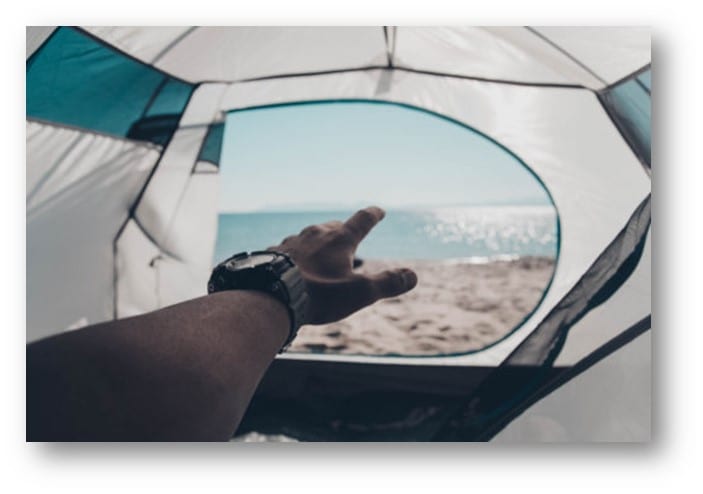
Know Your Gear
My 14-year-old son is a Boy Scout, and I am a Scoutmaster in our local Boy Scout Troop here in Pittsburgh. Our family also has a camp in nearby West Virginia. We’ve been on so many campouts over the years that I’ve lost count.
After all those trips I’ve picked up a ton of camping tips, tricks, and hacks. But by far the most crucial piece of advice I can offer you is to know your gear.
Trust me on this; you want to practice the setup of your camping gear before you arrive at the campsite.
The stressful experience of setting up your tent or camping hammock during heavy rain, at night, is all the adventure you need to understand why it’s critical to know your gear.
I recently wrote a longer, more detailed post on reasons why you need to have a working knowledge and understanding of every piece of gear that you own. Check it out when you get a chance.
Cleaning Your Gear After a Campout
So we’ve covered the reasons it’s essential to check your gear before a camping trip. But what about after the campout?
This is another piece of sound advice that I learned the hard way. And I implore you not to go down the same road that I did on this.
All it takes is one wet campout and a slight delay in cleaning your gear upon your return. And by slight delay, I’m talking about leaving your gear in a hot car overnight versus unloading it and cleaning everything immediately. Never do this!
Gear is expensive. And nobody wants to sleep in a tent or camping hammock that has ever had mold growing in it. No matter how much you clean it, there’s always a smell, no matter how faint, that you can’t remove.
Make this step a habit! It also allows you to check everything as you’re cleaning.
Tips and Tricks for Cleaning and Maintaining Your Gear
- Look at seams on tents: Pay close attention to areas near zippers like doors and windows.
- Patches work: Any rips or tears might need a vinyl tent patch. They are very useful.
- Don’t be afraid of do-it-yourself repairs: It’s surprisingly easy to use a needle and thread.
- Learn to sew on YouTube, and fix your gear: Most stores carry different types of curved and straight sewing needles of varying thickness that work on every kind of vinyl.
- Make repairs last: Use wax covered thread for added durability in your repairs.
- Field repairs make life easier, later: Fix small rips or tears immediately before they become worse. TIP: A small tear in your tent can catch a strong wind and rip open to an unrepairable size.
- NASA Astronauts carry duct tape, you should too: Always pack duct tape and do field repairs as temporary fixes.
- Spray waterproofing and apply seam seal as needed: Do this often. It might be overkill, but find myself reapplying waterproofing sprays and seam sealers every time I clean any of our tents. An easy way to locate areas of possible leaking is to spray a hose on the outside.
- Know how to properly clean your gear, aka read the instructions: Be careful to read the care and cleaning section of your camping hammock or tent. Some cleaners are too harsh for the fabric. Other cleaning solutions will remove seam sealer and any waterproof coatings on your gear. Another reason to KNOW YOUR GEAR!
Stowaways: The Hidden Surprise Waiting in Your Gear
Another reason to check your gear when you get home. Stowaways can be surprising and occasionally scary.
After all, you are camping outside in the wilderness. Is it that surprising to anyone that insects or even small animals occasionally get wrapped up in your gear as you quickly break camp to head home?
Every year when I start setting up my gear in the backyard, I find something new and exciting in the tents, camping hammocks, rain-flys, or tarps. Generally, anything that gets folded quickly.
At this point, I may be used to it and possibly even expect it. But it still doesn’t make it easier.
I challenge anyone to maintain their composure as a small chipmunk jumps onto your shirt as you unfold a tent to start cleaning it.

PRO TIP: Foolproof way to scare away an angry chipmunk that’s attacking you. My method works great. Simply flail your arms in a wild, erratic pattern, as you run in a circle repeatedly screaming, “Get it Off! Get it Off!”
Hopefully, you heed my advice and don’t forget this step. I always clean our camping gear in our backyard. I have absolutely no interest in chasing after scary looking spiders, chipmunks or snakes in my house.
And it’s essential to have a place to run to if your uninvited guest/stowaway decides to chase you.
Especially angry chipmunks.
Hammock Campers Easy Guide to Camping
I sincerely appreciate you taking the time to read, “Hammock Campers Easy Guide to Camping.”
I have put a lot of information in this, and I’m still adding new links and sections to it. So if you want to be notified when it’s updated or changed, please consider adding yourself to our confidential email subscription list.
I have also written additional related articles and posts that you might find useful in your quest for camping information. Feel free to look around the rest of our website.
Check out the rest of HammockCampers.com to find more useful camping information.

